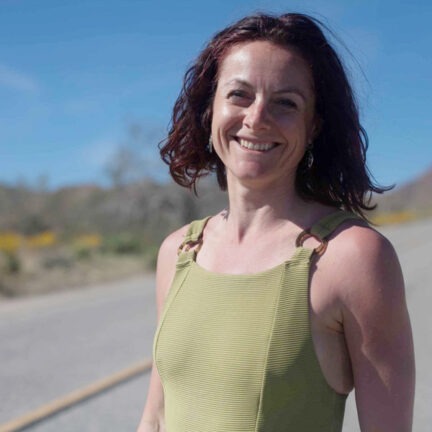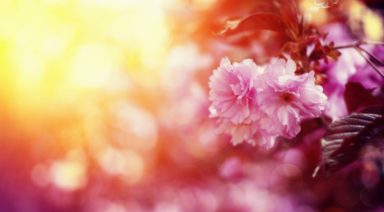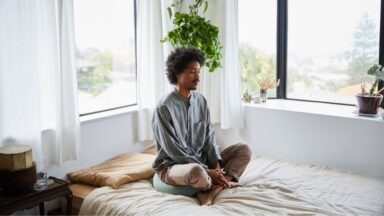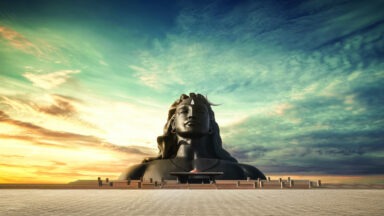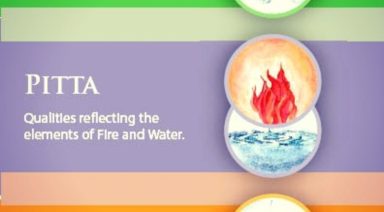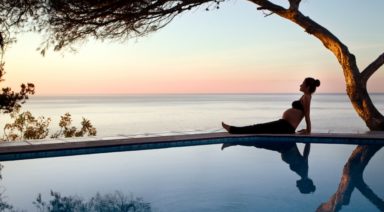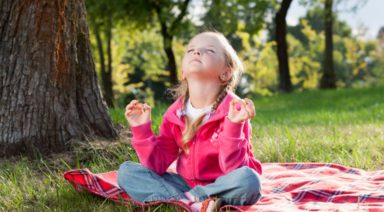Withdrawal of the Senses: Practicing Yoga Blindfolded
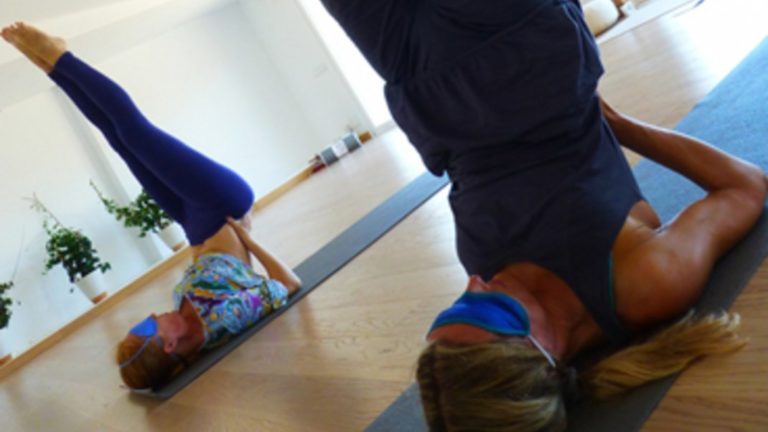
In yoga philosophy, Pratyahara – translated as removal of the senses, is designed to take us from the outside to the inside, a journey for the yogi to find the Self. How about removing your ability to see? It is one thing to close your eyes during a practice, yet to actually remove the choice of opening them is a completely different matter.
Practicing yoga with your eyes blindfolded has a huge impact on the rest of your senses. You’ll feel your balance being challenged as you remove visual references and you’ll also feel the rest of your senses become deepened and refined. Another benefit is a renewed sense of gratitude. We often take simple things—like our ability to appreciate beautiful images, light, movement and action through our eyesight—for granted.
Give it a go and see for yourself what benefits arise from the removal of one of your senses. With a scarf or sleep mask, cover your eyes. Take a moment to simply get accustomed to the idea of not having the choice to open your eyes during your practice. Allow for any feelings of anxiety or fear as you adapt to this big change. Calm any sense of panic by drawing your attention to your breath and feeling the solid earth beneath your feet. Feel the difference in the air, the space filling the room. Use the rest of your senses: hearing, taste, touch and smell, and remind yourself that you can always feel for the edges of your mat if you need to regain your bearings.
Practicing blindfolded is a time to take your asana practice a little slower and use a simpler sequence, in order to go deeper within. The present moment will be magnified and you will tune deeper into your breath, feeling and hearing the sensations of your body moving. You will notice that the need for focus and presence is much greater than usual. If your mind shifts or wanders at all from the present, you’ll feel lost. You may also recognize yourself seeking for external approval by checking what others are doing or looking for visual references. Use this as an opportunity to find approval from within yourself. After all, the purpose of the practice of yoga is to connect to your deeper self; to trust yourself and feel a sense of renewed confidence from within; to realize that the answers lie within.
Enjoy the experiment and use this as an exercise to adapt to change, to become more grateful for the smaller or invisible aspects of your life. Notice the qualities and attributes that arise during the practice and what effects you feel at the end. Take this as an opportunity to feel grateful for the simple things in life, the ability you have to see, to appreciate beauty.
Why Does Your Mala Necklace Have 108 Beads?

From the yoga studio to a night on the town, people are donning mala bead necklaces around the globe. However, this trend is steeped in meaningful tradition and symbolism. Each mala necklace has 108 beads, and each bead evokes an energetic frequency based on its material, whether stone or seed.
What is the Significance of 108?
The number 108 has a range of significance across many different cultures and disciplines. For example, this number informs the architecture of sacred texts that are central to yoga and eastern philosophy. As a devoted scholar of yoga and tantra, Shiva Rea explains in Tending the Heart Fire, “there are 108 chapters of the Rig Veda, 108 Upanishads and 108 primary Tantras.” And these texts are written in Sanskrit, a language comprising 54 letters, each with a masculine (Shiva) and feminine (Shakti) form, 54 x 2 = 108. Listed below are just a few of the many relationships that carry this number.
Ayurveda and Other Religions
In in the field of Ayurveda, there are 108 sacred places, or marmas, in the body, identifying intersections of matter and consciousness. When manipulated, these points can awaken and align the vital energy. Members of the Vedic tradition see this number as denoting the wholeness of the universe: one represents the solar masculine, zero represents the lunar feminine and eight represents the infinite nature of all things. In the classic japa mala, used in Buddhism and Hinduism, there are 108 beads used for prayer and mantra.
Mathematics and Astronomy
Mathematicians favor the number 108 for its countless patterns and potential divisions. For example, it is divisible by the sum of its parts and most of its proper divisors, making it a semi-perfect number. Through the lens of astronomy, the diameter of the sun is approximately 108 times that of earth and the distance from our planet to its solar star is, on average, 108 times the diameter of the sun. A similar parallel relationship also exists between the earth and the moon.

What is a Mala?
A mala, meaning garland in Sanskrit, evokes a circular, continuous form. In practice, a mala is the devoted offering of repeated cycles (typically in divisors of 108) of mantra japa or yoga asana. Within a mala, there is always a sense of beginning, continuing and completion. Both inside each individual cycle and in the practice as a whole. This three-form (trimurti) quality allows us to embody, in practice, the rhythmic cycles ever-present in the natural universe: creation (srishti), sustaining (sthiti) and destruction (samhara).

